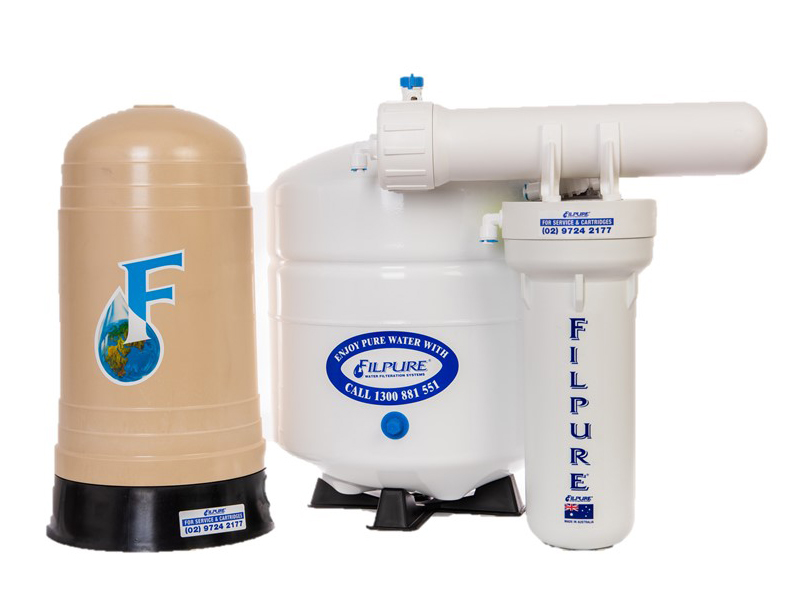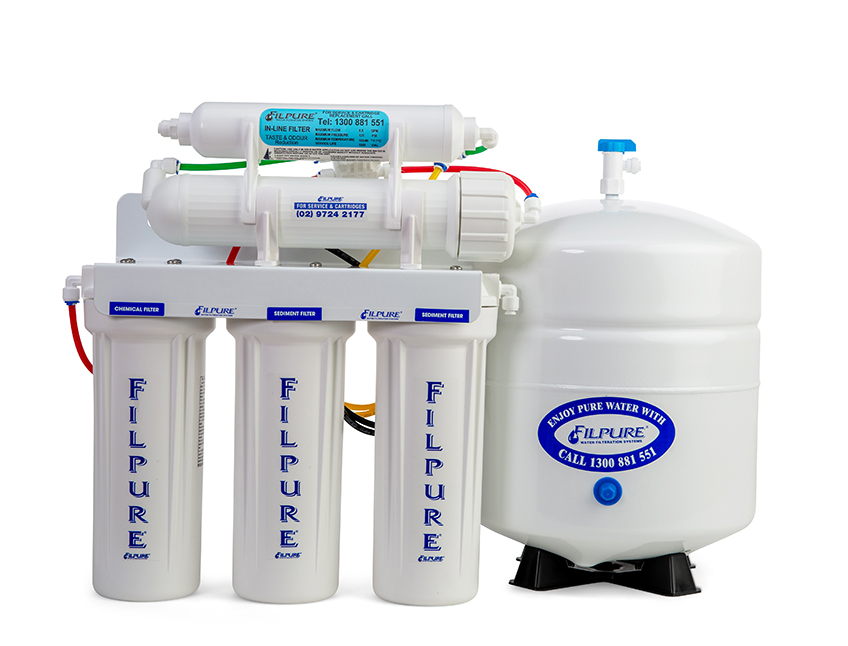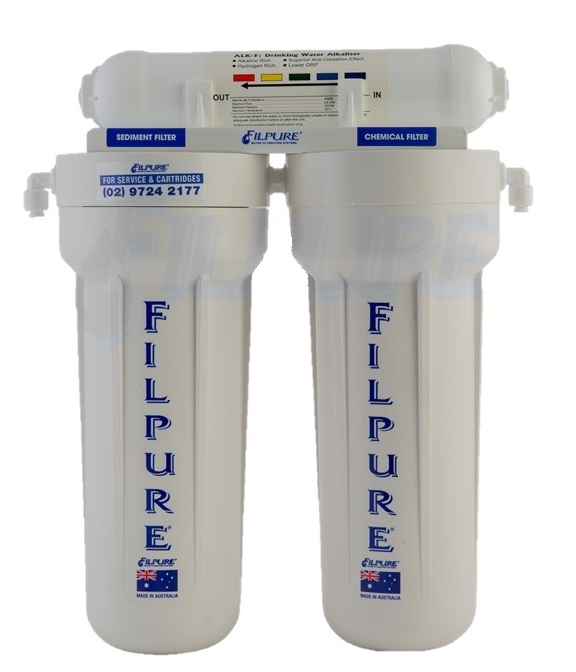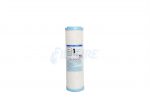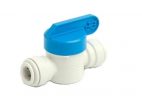Water Quality
Facts about Our environment and water
Environmental water contamination is the leading worldwide cause of death and disease. Despite more awareness and action by WHO and governments, 3.4 million people, mostly children, die annually from water-related diseases globally and 485 000 diarrheal deaths yearly. Even in the United States people often struggle with water pollution caused by natural disasters and human activities. In 2019, over 1,000 locations in 49 states have confirmed cases of contamination by highly toxic fluorinated compounds known as PFAS according to the Environmental Working Group. Meanwhile, 1.2 trillion gallons of untreated sewage, stormwater, and industrial waste are still dumped into US water each year which may affect ground and well water sources. Approximately 40% of the lakes in America are too polluted for fishing, aquatic life, or swimming.
It is easy to see why water pollution is a major problem for the animals and plants which live in those ecosystems, but the truth is that it also negatively affects people. These same contaminated water sources are where we get our seafood, where we swim and play, and even where our tap water is drawn from. While tap water is treated thoroughly to reduce pollution, some contaminants may remain including heavy metals, chemicals, microbes, and pharmaceutical drugs. Everyone who uses tap or well water will be exposed to some level of these contaminants every day. In 2017, 90% of the global population, about 6.8 billion people, used at least a basic service. In other words, these people have access to drinking water within 30 minutes roundtrip.
What happened to our tap and underground water sources?
According to research articles and news, most tap and well water in the U.S. now are not safe for drinking due to heavy industrial and environmental pollution. We have reached a point where, all sources of our drinking water, including municipal water systems, wells, lakes, rivers, and even glaciers, contain some level of contamination. Contaminants range from naturally-occurring minerals to man-made chemicals and by-products. While many contaminants are found at levels not enough not to cause immediate discomforts or sicknesses, it is proven that even low-level exposure to many common contaminants will, over time, cause severe illness including liver damage, cancer, and other serious ailments. Even the chemicals commonly used to treat municipal water supplies such as chlorine and fluoride are toxic and are known to have significant adverse effects on the human body.
Water Pollutants that Cause Illness
Most Common Water Contaminants Index Page
Drinking water, including bottled water, may reasonably be expected to contain at least small amounts of some contaminants. U.S. EPA sets standards for approximately 90 contaminants in drinking water. Contaminants are categorized as below and more detailed information on specific contaminants is also available.
Microbes ~ Radionuclides ~ Inorganics ~ Volatile Organics ~ Disinfectants ~ Disinfection By-products ~ MTBE
Microbes
Fecal Coliform and E coli are bacteria whose presence indicates that the water may be contaminated with human or animal wastes. Microbes in these wastes can cause short-term effects, such as diarrhea, cramps, nausea, headaches, or other symptoms.
Cryptosporidium is a parasite that enters lakes and rivers through sewage and animal waste. This microbe has an outer shell that allows it to survive outside the body for long periods which makes it tolerant to many chlorine disinfectants. It causes cryptosporidiosis, a mild gastrointestinal disease. However, the disease can be severe or fatal for people with severely weakened immune systems. EPA and CDC have prepared advice for those with severely compromised immune systems who are concerned about Cryptosporidium.
Giardia lamblia is a parasite that enters lakes and rivers through sewage and animal waste. It causes gastrointestinal illness (e.g. diarrhea, vomiting, cramps). Giardia, like cryptosporidium, can survive long periods outside the body and is also difficult to treat with just basic chlorine disinfectants.
Coliform bacteria are common in the environment and are generally not harmful. However, the presence of these bacteria in drinking water is usually a result of a problem with the treatment system or the pipes which distribute water. This indicates that the water may be contaminated with germs that can cause disease.
Turbidity has no health effects. However, turbidity can interfere with disinfection because the particles can act as shields for viruses and bacteria and provide a medium for microbial growth. Turbidity may indicate the presence of disease-causing organisms. These organisms include bacteria, viruses, and parasites that can cause symptoms such as nausea, cramps, diarrhea, and associated headaches.
Radionuclides
Alpha emitters. Certain minerals are radioactive and may emit a form of radiation known as alpha radiation. Some people who drink water containing alpha emitters over EPA’s standard over many years may have an increased risk of getting cancer.
Beta/photon emitters. Certain minerals are radioactive and may emit forms of radiation known as photons and beta radiation. Some people who drink water containing beta and photon emitters over EPA’s standard over many years may have an increased risk of getting cancer.
Combined Radium 226/228. The total amount of radium allowed in drinking water is very small. However, people that drink water containing radium 226 or 228 over EPA’s standard over many years may have an increased risk of getting cancer.
Radon gas can dissolve and accumulate in underground water sources, such as wells, and in the air in your home. Breathing radon can cause lung cancer. Drinking water containing radon presents a risk of developing cancer. Radon in the air is more dangerous than radon in water.
Are Minerals in Water Important for Health?
Minerals are essential for the basic functions of the human body to take place. They help to control bone growth, regulate fluids, normalize nerve and muscle functions, keep up metabolism, grow connective tissues, and so much more.
What are the Minerals Found in Drinking Water?
Calcium – Essential for strong bones and teeth. It also plays an important role in the digestive system. Lack of calcium can lead to osteoporosis.
Magnesium – Helps regulate potassium and sodium which control your blood pressure. It also helps absorb and break down vitamins and minerals.
Potassium: Potassium is an essential mineral that helps to regulate fluid balance in the body, as well as maintaining healthy blood pressure and heart function.
So, remember to eat healthily and enjoy a variety of vegetables and grains every day which will provide you with the beneficial organic minerals to stay healthy the natural way.
Five Drinking Water Contaminants
Pollutants in Drinking Water
Remember when you were a kid and there was nothing better to do on a hot summer day than taking a long, satisfying drink from the water fountain, that universal source of free drinking water? Things were so simple back then. Today, we know that tap water can often contain harmful contaminants including toxic chemicals and heavy metals. As a consumer response, plastic water bottles now clog our offices, minivans, hotels, and kids’ lunch boxes. We have become a generation of plastic users and hoarders.
But notice that bottled water is mostly just plain water. More than 25% of bottled water comes from municipal sources – that’s right, simple tap water – which means all you’re getting is very expensive purified city water. Independent tests have also shown that the quality of bottled water can range from very good to dangerously bad as the industry is weakly regulated.
Below is a list of contaminants that can often be found in both tap and bottled water.
Arsenic: Long-term exposure to Arsenic causes lung, bladder, and skin cancer and may cause liver and kidney cancer. It can also damage your heart, and central and peripheral nervous systems, and can instigate reproductive system problems and birth defects. As a result, you should avoid this contaminant at all costs.
Arsenic is a heavy metal that leaches into water from the ground or industrial waste, and the National Resources Defence Council (NRDC) has stated that bottled water is no safer than tap water because most bottled water is tap water that may or may not have been properly filtered.
The NRDC affirms the best way to reduce your exposure to arsenic is by purchasing a quality water filter that you can monitor and maintain yourself.
Radioactivity: The nuclear disaster in Japan earlier this year showed the world that the radiation threat is very serious. Radioactive particles can spread easily through underground water systems and thus affects all waterways and ecosystems.
Concentrations of uranium above the levels set by the Environmental Protection Agency (EPA) cause kidney damage and increase your risk for certain cancers. Meanwhile, radioactive iodine accumulates in the thyroid and causes thyroid cancer as it decays.
Nuclear power plants exist in many countries and even some minerals are naturally radioactive so there’s nowhere to hide. Radioactive pollution is also cumulative, which means it builds up in your body over your lifetime. Unfortunately drinking contaminated water is one of the primary methods we are exposed to radioactivity.
Fluoride: It sounds ironic that fluoride is an unwanted water contaminant when it is the staple ingredient in so many kinds of toothpaste. In the right quantities, it may reduce and prevent tooth decay. However, fluoride is highly toxic and in larger quantities can cause dental fluorosis, poisoning, and even death. Fluoride is also a suspected carcinogen, so you do not want to drink water that is fluoridated.
Since in the United States water and processed beverages provide 75% of fluoride intake, the best way to prevent fluorosis is by checking the concentration of fluoride in your drinking water (which shouldn’t be higher than 0.7 mg/L).
Chromium: In 2010 the Environmental Working Group (EWP) found excessive levels of chromium 6, a carcinogen, in the water supply of 31 U.S. cities. Exposure to chromium 6 causes a long list of terrible conditions like stomach cancer, kidney failure, renal and liver failure, premature dementia, and allergic contact dermatitis.
Chromates are often used to make leather goods, mortar, and paints, and they leach from these industrial processes into groundwater and soil, eventually ending up in our water.
Rebecca Sutton, a senior scientist with the EWP, says the best way to protect yourself is to buy an effective water filter since bottled water is not necessarily safer than tap water.
Lead: By now we all know the consequences of lead poisoning. Heavy metal is toxic to children since it interferes with the development of the nervous system and can cause anemia, seizures, and even death.
Lead gets into the water via water pipes, and even copper pipes may be soldered with lead. While lead was banned from water pipes in 1986, pipes made today still contain some lead.
Test for lead in your water by calling your local health department for free testing. Lead levels shouldn’t exceed 0.01 mg/L.
The Solution= Home Water Filtration
What can you do? Both in terms of efficiency and economy, a quality water filter will improve the taste and odour of your water while removing many harmful contaminants.
A reverse osmosis filter reduces chemical quantities and most pollutants, including heavy metals like lead, fluoride, chromium, and arsenic. In addition, a reverse osmosis filter will also remove nuclear radiation like plutonium as well as microbial contaminants such as bacteria and viruses. When combined with activated carbon filtration, a reverse osmosis system is one of the best technology available for keeping you and your family safe from toxic drinking water contamination.
Water Filtration or Purification – Key Differences
Water purification vs Basic filtration
With the growth of industry comes pollution. With pollution comes contaminated water.
Can the old basic filtration methods still produce the best drinking water? Or, do we need more intense purification methods to combat the modern contaminants in our water supply?
The answer is probably the latter. But let’s discuss the traditional filtration methods first. These basic traditional methods can include many options, with the two most prevalent being boiling and chemical. Although effective in ridding water of some things, we will show you that these methods still leave behind harmful materials in the water.
Traditional Water Filtration Methods
1.Boiling
Historically, boiling is what has been used to disinfect water from microorganisms. When done correctly, it can kill most bacteria, but not all. Bacteria and protozoa are killed in the first bubble, and it takes about three minutes to kill the rest.
The drawbacks to this filtration method:
It can require lots of fuel and cooking equipment.
Water cannot be used immediately, as it needs to cool down.
Since the boiling water is so hot, some of the water may evaporate before its use.
The water can still contain particles. So further filtering through a handkerchief could be necessary.
Finally, boiling water does not eliminate chemical pollutants (including chlorine), poor taste of foul odors, and in fact can leave a stale taste.
Boiling water may be the only method during situations like camping, but in a household, there are more effective and efficient methods available.
2. Chemical
There are two primary chemicals used to purify water: iodine and chlorine. Both are lightweight, low-cost, and easy to use. Iodine has been proven effective in killing off viruses, bacteria, and protozoa. However, the colder the water is, the more time it will take to purify with iodine. Iodine can also absorb the dirt and debris naturally found in water, so the dosage will always vary. Also, pregnant women or those with thyroid conditions should not drink water with the chemical. Usually, iodine is just used for short-term purposes, and should not be used for more than three consecutive months. Many do not favor the taste it leaves behind either. The unfavorable taste can be combated by mixing the water with a sugar-based drink mix, or better yet, by not using the method at all.
Chlorine bleach is the second chemical purifier. The process of chlorination will cause dirt and debris to settle to the bottom of the water container and make the water visually clearer. The American Red Cross endorses the brand Chlorox. The Red Cross states that people should use unscented household bleach that contains 5.25% sodium hypochlorite. When using bleach to purify, the recommendation is to add 16 drops of bleach per gallon of water, stir, and let stand for 30 minutes. If the water does not have a slight bleach odor, repeat the dosage and let stand for another 15 minutes. There are many drawbacks to the chlorination method. If the household bleach is over six months old, it may not have enough potency to disinfect. Also, chlorine is very poisonous, and adding too much can cause illness, internal organ damage, or even death. Chlorine has been linked to many health problems. You can read about them in the health section of this site. Also, if one decides to use bleach, be sure to add it at the time intended to use the water, not when storing.
Seeing the drawbacks of these traditional filtration methods brings us to understand why more advanced water purification is required nowadays.
Advanced Modern Water Purification Methods
Water filtration by definition simply means to strain out the impurities from a water source. The larger the impurity particulate, the easier it is to filter. The opposite is true: the smaller the impurity particulate, the harder it is to remove. Thus, the size of the filter pore and the durability of the filtering element are important to the filter’s longevity and ability to perform. Most filtering elements are made of ceramic, glass fiber, hard-block carbon, or materials that resemble compressed surgical paper.
Some of the better purification methods include activated carbon and reverse osmosis. The best contribution that carbon makes to filtration technology is its ability to reduce chemical quantities, poor taste, odours, and many pollutants. Because carbon is only mildly effective in filtering out particulates and microorganisms, it is mostly used as a second or third-stage filter in-home and portable water use. It is seldom used as a stand-alone filtering, and oftentimes, used in conjunction with reverse osmosis. Reverse osmosis, which uses a semipermeable membrane filter to separate the water from contaminants.
Reverse osmosis is highly effective in removing several impurities from water such as total dissolved solids, turbidity, asbestos, and other toxic heavy metals, radium, and many dissolved organics. The process will also remove chlorine, and can also remove nuclear radiation such as radioactive plutonium or strontium in the drinking water. Therefore, reverse osmosis combined with activated carbon is very advanced in water purification, The King of filters Model F4, F5 & F6 seems to be the most advanced method of purification developed so far.
Why do we need to remove chlorine from our whole house?
Chlorine has been used to disinfect water for consumption to eliminate waterborne diseases for decades. It is extremely effective at killing pathogens and diseases. It is widely used because it’s inexpensive and easy to control and monitor. Chlorine easily maintains a residual level in the water distribution that continues protecting drinking water supplies from bacteria growth. This is why chlorine is considered one of the best disinfecting agents. Despite its effectiveness and inexpensive ability to disinfect the water supply, chlorination has some problems of its own.
Private well users may or may not be using chlorine to disinfect the water as they do have some choice in the type of disinfection. City water users do not have control of the disinfection methods and chlorine is most commonly used
Chlorine produces harmful byproducts
When chlorine is used as a water treatment, it combines with organic matter in the water to form byproduct compounds called Trihalomethanes (THMs). These compounds are toxic when consumed, inhaled, or applied to the skin. Research conducted on the health effects of chlorinated drinking water has demonstrated a variety of toxicity issues. The Environmental Protection Agency (EPA) has concluded that there is evidence to support a potential association between long-term exposure to high levels of THMs and bladder cancer as well as suggestions of an association with colon and rectal cancers. In addition, the Environmental Research Foundation cites several studies linking moderate to heavy consumption of chlorinated tap water by pregnant women with higher miscarriage and birth defect rates. Water disinfection is extremely important to rid of the bacteria and viruses in the water but other disinfection methods do not produce these toxic byproducts.
Our exposure to chlorine
The most obvious problem with chlorine in the water is that it leaves an unpleasant taste and smell behind. Chlorine can alter the taste of water, coffee, tea, and other beverages. Chlorine is ingested from drinking water and also inhaled in showers. It can even make hair and skin feel dry after showering. The problem not only lies within drinking water but also in bathing water. Showering and bathing in chlorinated water may expose us to even more chlorine than drinking the byproducts in chlorinated water. While showering, chlorine is not only absorbed through the skin but also vaporized in the shower and inhaled into the lungs. This means the majority of our daily chlorine exposure comes from showering. Chlorine poses a problem throughout all of our water faucets and should be removed from the entire water source.
How can I remove chlorine from my water?
Carbon filtration adsorbs chlorine without leaving any negative effects on your water supply. Adsorption takes place when your water comes in contact with the carbon filter. Carbon removes chlorine, taste, odor, and organic compounds to deliver clean, filtered water to every outlet in your home.
For complete protection with Reverse Osmosis
To provide the safest drinking water, it is recommended to add a Reverse Osmosis drinking water system in your kitchen. Reverse osmosis is a 5-stage filter that will remove up to 99% of all contaminants in the water. Three of these filters are carbon filters which will provide even more protection with chlorine and the other two filters work to remove heavy metals, pesticides, and any other types of contaminants that the whole house filter was unable to remove. With both the whole house filter and reverse osmosis system you will enjoy pure quality drinking water and chlorine-free showers and baths.
Where Does Our Drinking Water Come From?
Water is a vital element in each of our lives. Not only is it essential to our health, but also we use it for numerous household tasks. Every day we use water for cooking, bathing, cleaning, and drinking; but how often do we think about its source?
Where does our water come from? How is it treated? How do we know it is safe to drink? To answer these questions, it’s important to go back to the basics. There are two main sources of water: surface water and groundwater. Surface Water is found in lakes, rivers, and reservoirs. Groundwater lies under the surface of the land, where it travels through and fills openings in the rocks. The rocks that store and transmit groundwater are called aquifers. Groundwater must be pumped from an aquifer to the earth’s surface for use.
Consumers receive their water from one of two sources: a private well, or a city water system. A household well pumps groundwater for household use. The source of a city water system may be either surface water or groundwater.
Other sources of contamination are a result of human activities such as manufacturing, agriculture, or individual misuse. The following activities may cause harmful chemicals to enter the well water owner’s water supply.
Leakage from waste disposal, treatment, or storage sites.
Discharges from factories, industrial sites, or sewage treatment facilities.
Leaching from aerial or land application of pesticides and fertilizers on yards or fields.
Accidental chemical spills.
Leakage from underground storage tanks.
Improper disposal of household wastes such as cleaning fluids, paint, and motor oil.
Well, owners generally disinfect or otherwise treat the water from their wells to remove the contaminants that are caused by such activities. As a private well owner, it is best to make sure the water you consume is safe from harmful contaminants. Even though one might not be able to taste the difference in filtered water, the difference in health would be revealed over time and it is non-reversible.
City Water Systems
City water systems. City water systems are required to meet the standards set by the Environmental Protection Agency (EPA) under the authority of the Safe Drinking Water Act (SDWA).
The SDWA was passed by Congress in 1974 to establish nationally consistent drinking water standards. A standard is the maximum level of a substance that the EPA has deemed acceptable in drinking water. In 1986 the SDWA was amended to require the EPA to publish standards for 83 specific contaminants and additional standards thereafter. To date, the EPA has issued or proposed limits for 87 substances. City water systems are currently revising their drinking water programs to meet the more stringent requirements of the amendments.
City water systems must ensure that the drinking water they supply does not have contaminant levels higher than the standards of the SDWA, the SDWA amendments, or state regulations.
To set a standard for a drinking water contaminant, the EPA first reviews the data concerning the health effects the substance may cause. The EPA then proposes nonmandatory Maximum Contaminant Level Goals (MCLGs). MCLGs are set at zero for contaminants that are known or probable human carcinogens. For noncarcinogens, MCLGs are set at a level where no adverse health effects would occur with a margin of safety.
At the same time, the EPA also proposes a Maximum Contaminant Level (MCL), the enforceable drinking water standard, which is set as close to the MCLG as possible, taking into account technological and economic considerations.
After a time for public comment and review of the MCL and MCLG, the EPA enacts a final regulation. States are expected to adopt the standard within 18 months of enactment.
The SDWA requires utilities to conduct routine monitoring and testing of public water supplies. Two types of sampling are required. Routine Sampling takes place regularly and ensures that a treatment plant is running properly for delivering a consistent quality of drinking water. It also determines whether water quality meets the MCLs.
When a routine sample analysis indicates elevated levels of a particular contaminant that may exceed EPA or state standards, states may require systems to take a check sample. Check samples are used to confirm the results of a problem discovered during routine sampling.
In summary, the EPA generally delegates to the states the authority to enforce all federal drinking water standards. However; how well they are enforced is very questionable. (See the other news articles on some latest findings of our tap water). In addition, the national standards for contaminants were developed more than fifteen years ago by EPA. Today, many new industrial contaminants were not even known to us back then. Plus, the standards for what is considered healthy and acceptable sure have changed. To combat the unknown health threats to our family, we need to raise the standards of our drinking water.
Point of Use Water Filter Solutions
Whether consumers receive their water from a private well or a city water system, they may wish to treat it at its point-of-use (POU). Consumers do have the option to choose the higher quality of water that POU technologies can provide.
POU technologies treat water at single or multiple taps or for the whole house and improve water quality in a variety of ways. Unusual taste, color, and odor or water may be corrected by POU technologies, and some POU devices also reduce harmful contaminants.
A variety of POU equipment is available for improving drinking water and other special purposes. Each technology is designed to solve one or several different water quality problems. To choose the right equipment, it is important to define the nature and extent of their water quality problems.
The first step in correcting a water quality problem is often to have the water tested. When the safety of the water is in question, it should always be tested by a state-certified or other reputable laboratory. Testing for aesthetic concerns such as taste, odor, color, and hardness may be performed in the home by a professional water treatment dealer.
Testing the water will help determine the proper treatment necessary.
Drugs & Pharmaceuticals in Tap Water
Pharmaceuticals get into the water supply via human excretion and by drugs being flushed down the toilet. You might think wastewater treatment plants would take care of the situation, but pharmaceuticals pass through water treatment.6 June 2018
Sewage treatment plants are not currently designed to remove pharmaceuticals from water. Nor are the facilities that treat water to make it drinkable. Yet a certain amount of pharmaceutical contamination is removed when water gets treated for other purposes.1 June 2011
The MOEs for naturally occurring endogenous estrogens in drinking water (ranging from approximately 100 to 600) are smaller than the MOEs for prescribed estrogens, indicating that natural sources of E1, E2, and E3 contribute more to drinking water exposures than prescribed sources
So far, studies have shown that the drugs most likely to be present in drinking water include:
- Antibiotics
- Mood stabilizers.
- Contraceptives and other synthetic hormones.
- Blood thinners.
- Heart medication.
- Painkillers
Low levels of pharmaceuticals in the water supply have been a concern for a decade or longer. The finding of pharmaceuticals in public water supplies is not a new phenomenon.
According to a science fellow at the Natural Resources Defense Council, an environmental action group, “Ever since the late 1990s, the science community has recognized that pharmaceuticals, especially oral contraceptives, are found in sewage water and are potentially contaminating drinking water.”
Concern among scientists increased when fish in the Potomac River and elsewhere were found to have both male and female characteristics when exposed to estrogen-like substances, she says. For instance, some fish had both testes and an ovary. Scientists started looking at the effects of oral contraceptives first. “Now analyses have expanded to look at other drugs.”
Technology has made this research easier, says Suzanne Rudzinski, deputy director for science and technology in the Office of Water at the U.S. Environmental Protection Agency. “Analytical methods have gotten better and we can detect lower levels than ever before.”
All sides of the debate agree this is not known for sure. “At this point, we don’t have evidence of a health effect,” Rudzinski says, “although it’s an area of concern and one we will continue to look at.”
It’s true that the levels of the medications found in drinking water] are very low. But especially when it comes to pharmaceuticals that are synthetic hormones, there is a concern, because hormones work at very low concentrations in the human body. We think this report, in particular, is a call for our federal agencies — EPA in particular — to do further studies to see what the health effects are.
Home filtering systems such as reverse osmosis may reduce the medication levels, says Timothy Bartrand, Ph.D., a postdoctoral fellow at Drexel University, Philadelphia, who participated in a National Science Foundation workshop to develop a drinking water research agenda. ” An activated charcoal system will remove some pharmaceutical drugs but not all,” Janssen says. “A reverse osmosis system can also remove some.”


